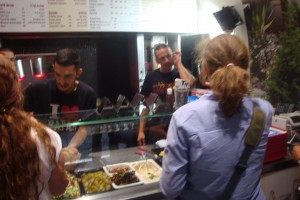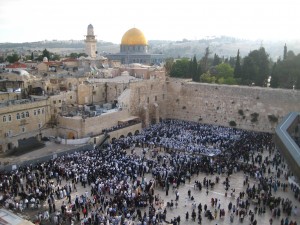Editor’s Note: This piece is part of a series exploring how BYU students break stereotypes about foreign cities on BYU study abroad programs. A story last week covered London.
The BYU Jerusalem Center provides BYU students the opportunity to learn about the ancient city and explore both stereotypes and religious plurality.

Jerusalem is one of the most ancient cities in the world, and the BYU Jerusalem Center is located in East Jerusalem, where it welcomes students from BYU Provo, Idaho and Hawaii to take classes on Old and New Testament, Israeli and Palestinian history, Arabic and Hebrew.
Students have said their parents were concerned about their safety because they equate Jerusalem with wars. Nick Larsen, a junior studying mathematics, went on the Summer study abroad last year and said his mother had concerns.
“When I first told my parents that I wanted to go, my mom was really worried because she thought it was going to be really dangerous,” Larsen said. “As she learned more about it, it was ok, and I don’t think I ever felt in danger.”
Rules at the BYU Jerusalem Center include not allowing students to go through the city alone, so they always need to be in groups of at least three people when visiting the city to prevent any sort of problem.
Amy Filmore, a senior studying nursing, expected to see sand, dirt, rocks and camels everywhere in the city and was surprised by what she found.

“It was way greener than I expected, especially because we got there toward the end of spring, and there are camels in Jerusalem but they are very ‘touristy,’ and I rode one, but in Jordan,” Filmore said.
Larsen was surprised by how similar the weather was to that in Utah and said Jerusalem’s summers are actually cooler than Utah’s.
“It was hot the whole time, but not as hot as I expected it to be; it’s not hotter than Utah in the summer,” said Catie Nielson, another student who went to Jerusalem during the summer last year.
Although most of the students’ meals are in the cafeteria of the Jerusalem Center, they can go to the streets of the city and try authentic food from the many vendors who shout in the streets. The most popular dishes are falafel, schwarma and hummus.
Christians, Jews, Muslims and Armenian Christians consider Jerusalem their holy city, and the students learn to recognize members of each religious group by their dress and location within the city. Muslims live mainly in East Jerusalem, and the women wear headscarves. Jews are the vast majority and live in West Jerusalem, and some of the men wear ‘kip pas’ — small, round hats. As for the Christians and Armenian Christians, they live in small communities around the city and are considered minorities. All the people the students met were respectful of them, even though Mormons are a relatively recent addition to the ancient city.
The students said some of the professors were Jewish, and they had the opportunity to meet their families and learn a little more about their religious rituals.
Students had the chance to see the Jewish celebration at the Western Wall.

“One time we went on a Friday night because the Sabbath begins on Friday night, and so we went as they were doing a celebration to welcome the Sabbath,” Larsen said. “There was lots of singing and dancing.”
The students also met some Muslims. Larsen and Filmore played soccer many times with a girl named Raghad and her friends and even met Raghad’s family.
One of the most valuable lessons the students learned was interfaith cooperation. They found out people can be good whatever religion they may have.
“It doesn’t matter if they worship in the Wailing Wall or at the Dome of the Rock or in Mecca — they all have desires in their hearts to become better, and eventually people are going to figure out where the light is that comes from Christ, and in their time they will recognize it because of their desire to be good,” Filmore said.
Watch a video made by a student who went in 2012.
Next week China will be featured.




